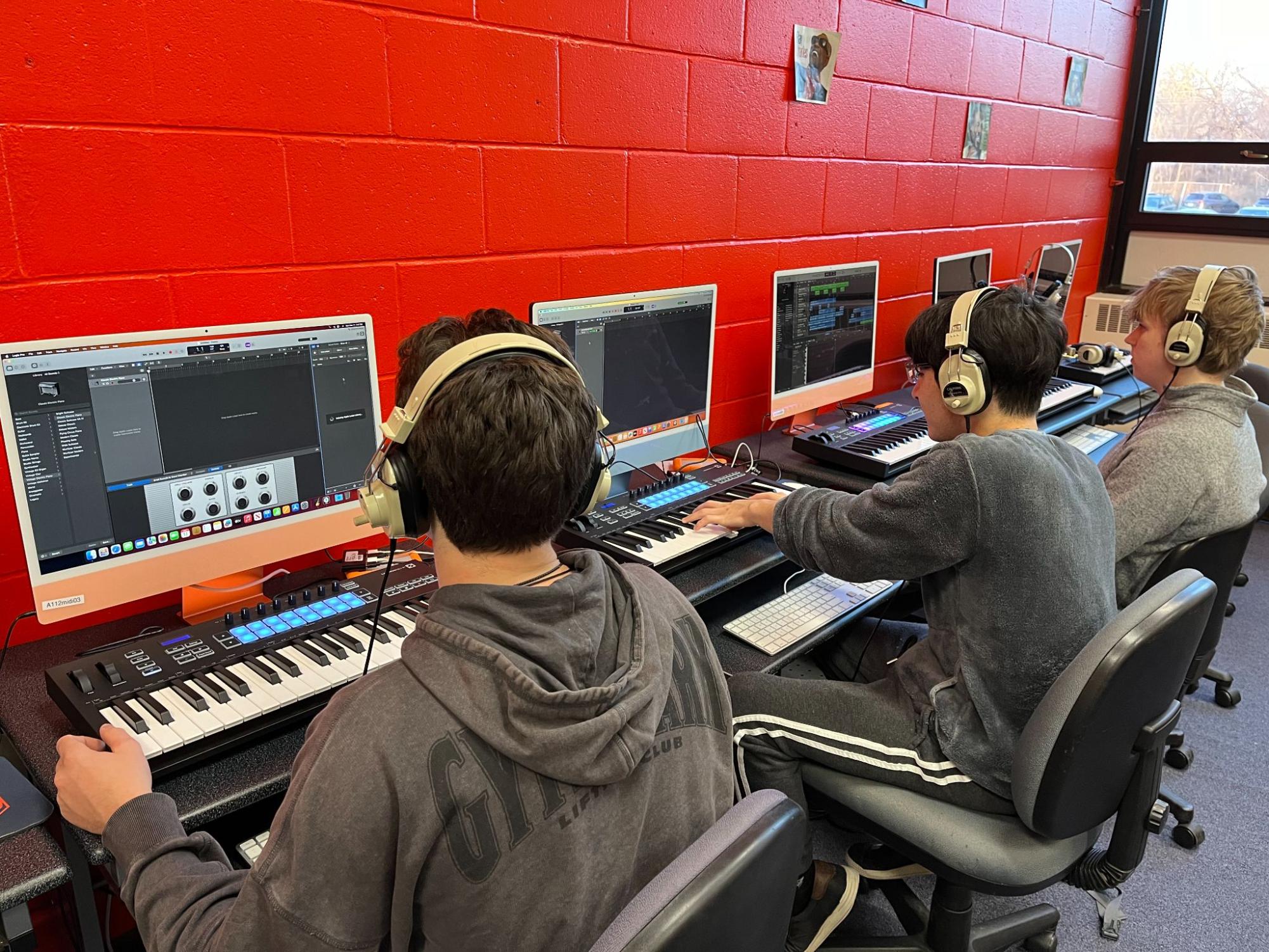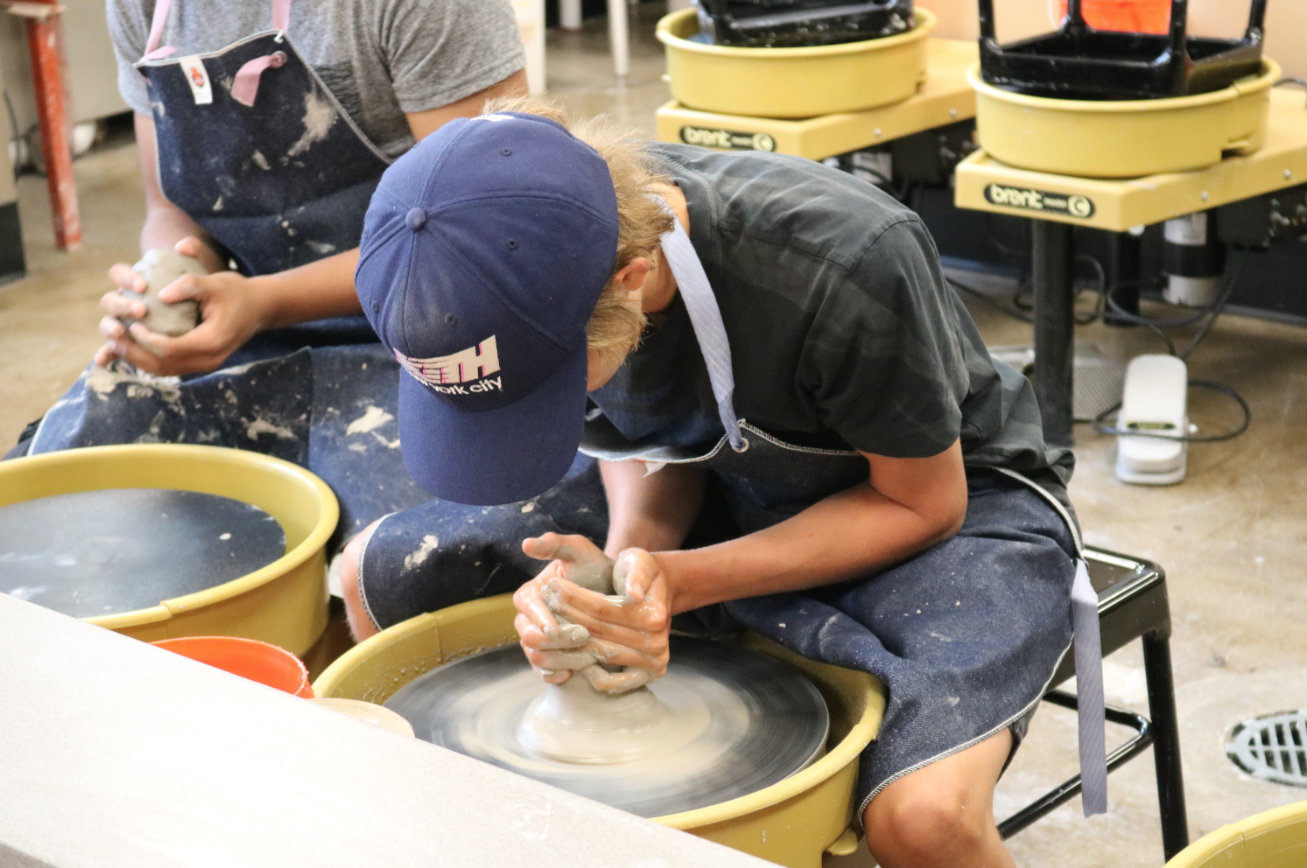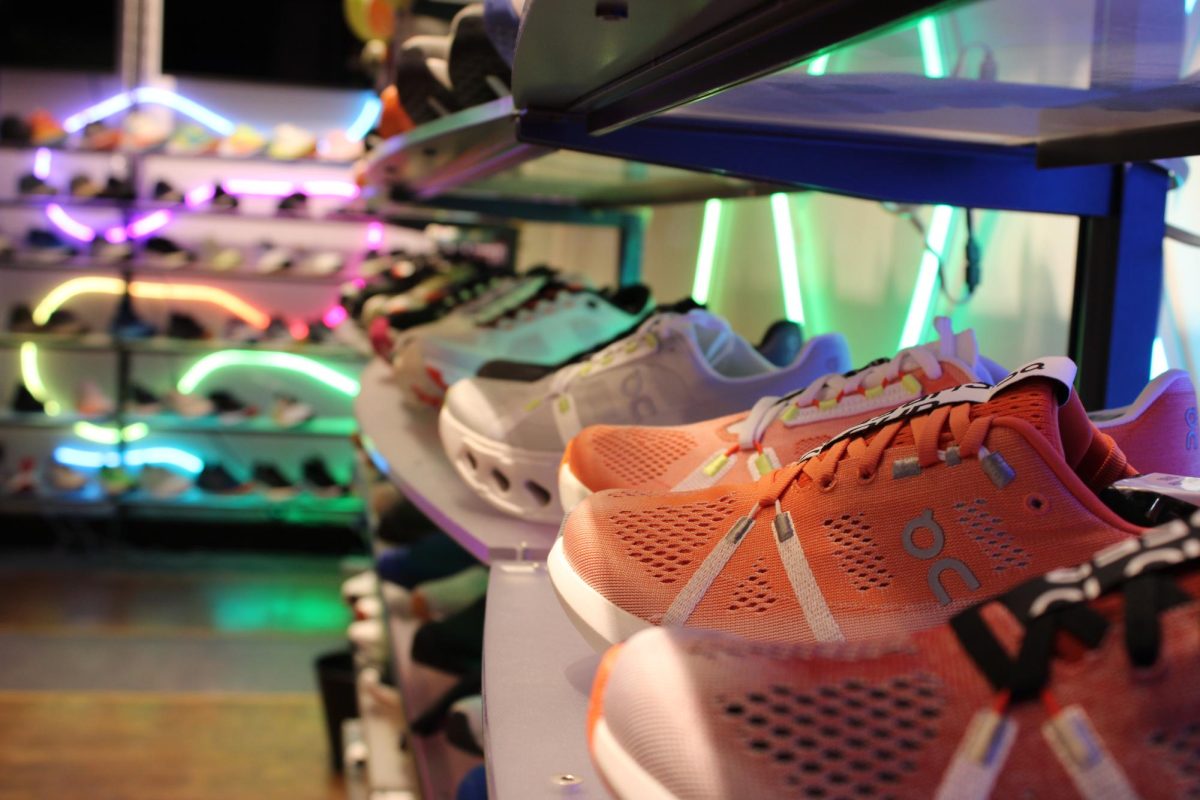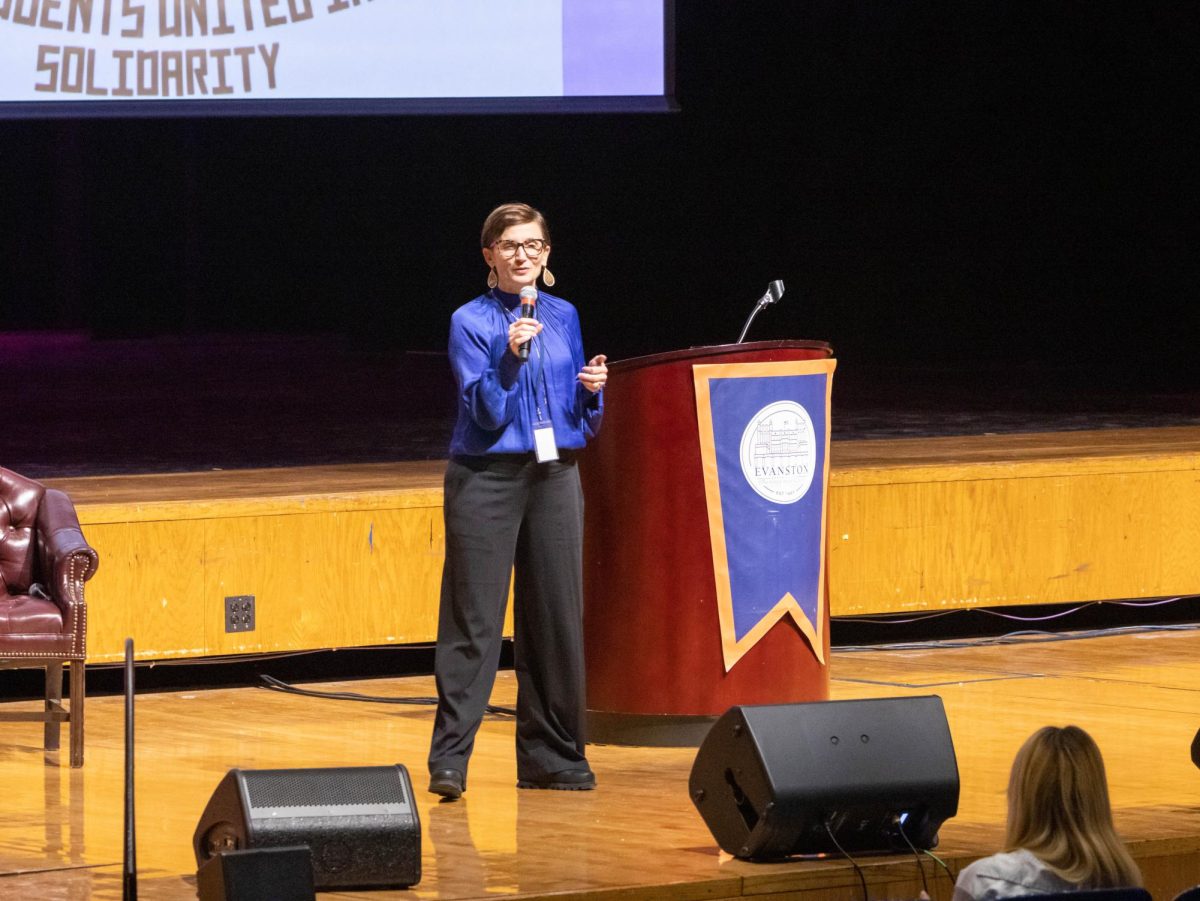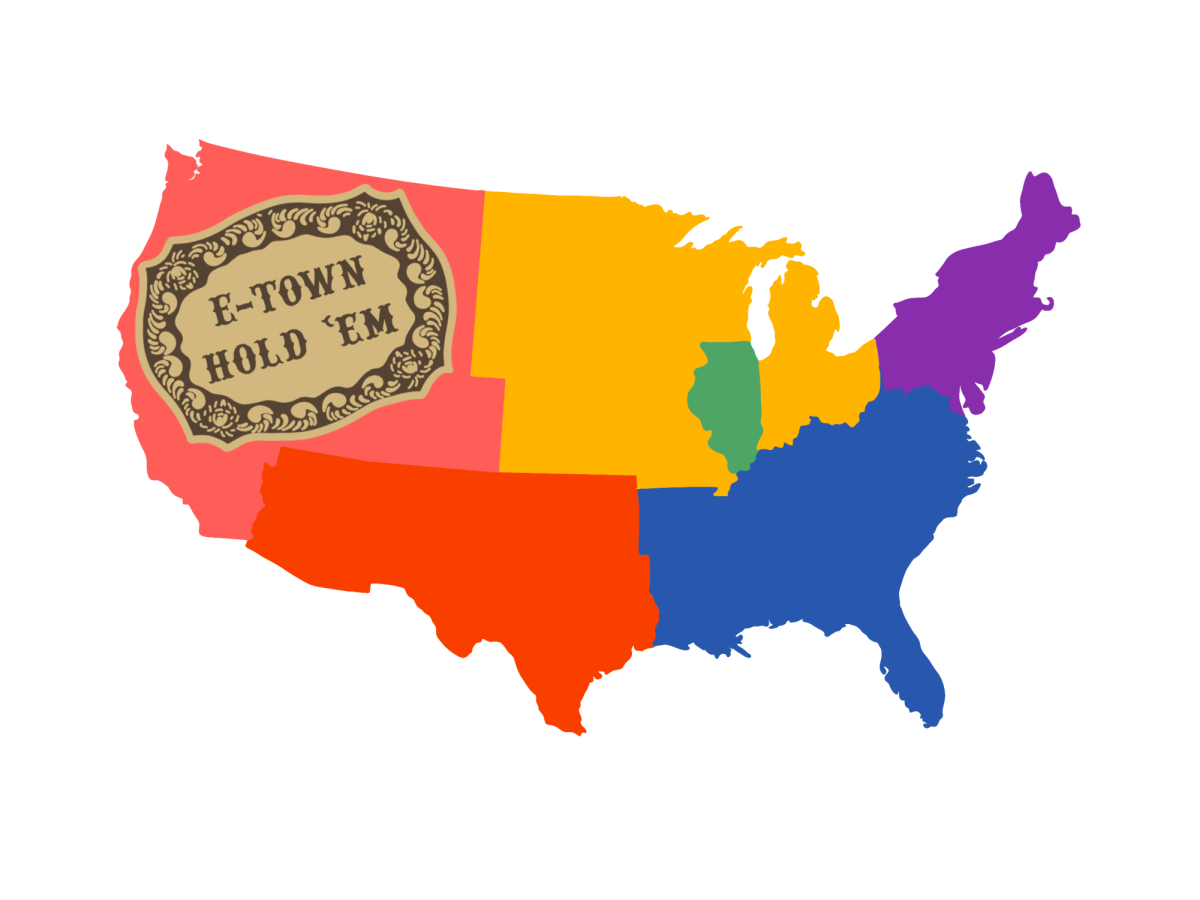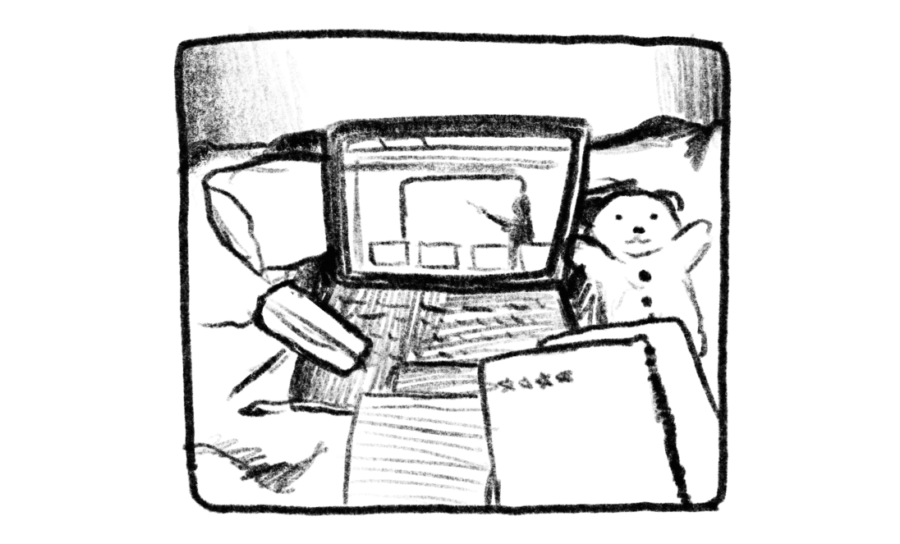As long-term district initiative conversations began last school year, many ideas were on the table, from policy changes to implementations of new programs. The Board of Education had plenty of issues to address, not in the least bit the post-COVID performance gaps. When a completely new department, a combination of the Fine Arts and Career & Technical Education (CTE) departments, was proposed, the idea immediately stuck.
“We need bold, new, innovative things we should be doing as a district,” said Superintendent Dr. Marcus Campbell.
The new department, entitled Arts & Innovation, would allow students to delve into the interconnectedness of two broad areas of study. The majority of ETHS’ most popular electives would be housed under this new department, matching the English and Math departments in size. As board members saw it, the combination would allow ETHS to create innovative courses that would directly correlate to the continually changing world, bringing high schoolers’ technical and artistic skills into the future.
“The vision is centered around how we can [adapt to the] 21st century and the excitement around that, and how we can make sure that as one department, multiple skills and skill sets come out of that,” said Assistant Superintendent and Principal Taya Kinzie.
Once administrators were on board with the idea, much still had to be done. In addition to the entire rebranding of the two departments, renovations to classes and the development of entire new course sequences were on the docket. Perhaps most importantly, teachers and students had to be convinced of the logic behind the departmental shift and the potentials it held.
For newly appointed Arts & Innovation Director Nicholas Gehl, formerly the Fine Arts department chair, realizing the existing similarities between the two departments and their overall missions was critical.
“One of the things I see is that there are a lot of commonalities when we talk about the student experience. A lot of the classes in elective programming are hands-on project-based work,” said Gehl. “We’re all trying to create a unique learning experience for kids. We’re all trying to help kids tap into their interests.”
During the 2024-2025 school year, ETHS will offer more than 130 unique elective courses under the Arts & Innovation department. With all that course material to handle, the combination of the Fine Arts and CTE departments allows for more streamlined administration.
“Sometimes those structures can get in the way of collaboration, because maybe it doesn’t allow for meeting time or connection time, or even people to know one another, because they’re in different departments,” said Gehl.
Already, just one semester in, teachers have seen the benefits of collaboration between departments.
“Since I’m teaching it with [another teacher] who’s in the Arts & Innovation department and I’m in the Math department, we’re able to combine our forces,” said Maryjoy Heineman, a Geometry in Construction teacher.
Transitioning from his previous role, Gehl has had to spend much of this school year getting to know the CTE curriculum and all its requirements. A major part of that is collecting teacher input on the merger and broad departmental goals.
“I know [Gehl]’s really asking for input and working to get [the teachers’] perspective,” said Kinzie.
Another key component is to generate student and parent interest in the new department, since many students end up taking an Arts & Innovation class just to meet the graduation requirement of three credits in the department.
“We’ve started to see more interest [in the classes],” said Kinzie. “The Arts & Innovation department has done a good job generating that interest with videos, classroom visits and getting parents excited.”
One notable feature of the new department is the amount of career-oriented classes that it houses. From Auto Technology to Marketing in Sports and Entertainment to Animation, the offerings allow students to explore post-high school plans, learning from teachers with real-world experience.
“Most of the people in the department, they worked in the industry before they became teachers,” said Campbell.
Throughout much of last year and the first semester of this school year, teachers and administrators have been working continually to develop a plan of action for the department.
“We had some meetings last year that were really just big picture, thinking about where we want this to go. Now, we’re starting to enter into the next chapter,” said Band Director Matthew Bufis, who was on the initial departmental planning committee.
The second semester of this year will be spent laying the groundwork for new courses and course sequences. Despite the fact that developing new classes is an ongoing process in all departments, the need for new classes under the Arts & Innovation category, with the combined resources of the two previously separated departments, is specific to this situation.
“By the end of the semester, they’re hoping to have some concrete new Arts & Innovation courses that the [Board of Education] can approve in the fall,” said Campbell. “Building new course sequences for the department as a way to build together and get to know each other [acts as] a springboard for more things that are to come.”
If all goes according to plan, the new course options will be finalized and approved by the Board of Education in the fall of 2024 and then made available for students starting in the fall of 2025. While the exact subjects have yet to be determined, the intersection of arts and science in fields such as architecture and design will be considered. The need for classes that reflect the ever-changing world is not lost on department leaders such as Gehl.
“Who are our kids?” Gehl said. “Who is our community? What’s happening in the world today that we need to be responsive to? And then how can we look at our programming to respond to that? The conversation around updated programming should be an ongoing one, because the world [we live in] is always changing, and we need to be mindful of that.”
As part of the process of making a new course, the department looks at the success of other course offerings in other school districts. In select cases, this approach can be helpful, but the specific needs of Evanston students need to be addressed, meaning there isn’t always a one-size-fits-all model.
“If we create a class, it might sound really great, and we might have seen it work in another community or another school. But our community might not be like that,” said Gehl.
For Bufis, the importance of aligning new courses with student interest as well as trends in the professional world is paramount.
“What sort of ideas do we think that students are going to find to be valuable? We can create a great new class that we think is awesome, but if [students] don’t sign up for it, [the class] won’t run,” he said. “Not only [should we] look at peer high schools [to learn] about what is offered elsewhere, but connect to what [students’] needs are beyond high school.”
With that goal in mind, two new courses that have already been in the works for multiple years will be offered as part of the new department next year: Certified Nursing Assistant Training and Digital Illustration, both created in response to recent demands in the job market.
Students who successfully complete the Certified Nursing Assistant Training course will be able to transition to a nursing assistant position at a hospital or medical facility immediately after high school graduation. To provide the necessary experiences for certification, an entirely new health sciences lab is under construction. The space, which will be on the second floor of the arts wing, will attempt to mimic a real hospital setting, boasting five hospital beds, hospital curtains and crash carts.
“It’s going to be a setting that helps us provide an experience for kids that almost mirrors a health facility,” said Gehl.
The class will be led by Ida Joyce Sia, a former teacher that currently works as a nurse at the ETHS Health Center.
In addition to ongoing renovations, an entire upheaval of the arts wing is set to occur in the coming years. The exact timeframe of the construction is still in the air, however, due to the large nature of the project and the fact that many of the spaces are used by students on a daily basis.
“They’ll do a lot of the work during the summer when students aren’t in the spaces. It’s hard to do a lot of the work we do in our classrooms in the arts wing in alternative spaces,” said Cynthia Curtis, an Industrial Technology and Project Lead The Way teacher.
In Bufis’ eyes, the long-term renovations offer a chance to bring ETHS and its facilities into the future.
“We like to do things that make our students feel special and important and establish ourselves as a place of learning and evolving and growing,” he said. “This is another opportunity to do just that in a very big way.”
When looking at what ETHS has done in the past to adapt to modern technology, Bufis highlighted the installation of solar panels, a power plant, new eco-friendly drainage systems, the planetarium and the new band tower, among other things.
In this round of renovations, to specifically adapt to the future, Bufis believes that building multi-purpose spaces is essential.
“We thought we would think creatively about the spaces that we have. If you look at a lot of modern renovations, a lot of the spaces are a lot less prescribed than they used to be to give maximum flexibility so that you can adapt, change and evolve over time,” he said.
The renovations also bring up the possibility of building new rooms, similar to the health sciences lab, that allow for very specific career preparation.
“Having spaces that reflect what we see in industry is only going to benefit students and teachers,” said Curtis.
For Bufis, and many teachers in the newly formed department, the implementation of renovations signifies an important commitment to the students by the school to stay relevant.
“[This renovation informs students] that they have a home here, they’re seen here and that this is an important part of what we do as an educational institution,” said Bufis.
The renovations, which will amount to multiple millions of dollars, will be funded by the ETHS Foundation, who started fundraising efforts last spring.
Although there is still much work to be done in developing programs and physical spaces that make up the new department, the overall feeling among teachers is a positive one.
“I hope that in the future with Arts & Innovation and any of the other departments in the building that we can combine forces where it’s really meaningful and powerful for our students,” said Heineman. “That can really entice a lot of students to maybe try things that they wouldn’t have tried because of the combination of courses.”
All the plans for the new department are in their very early stages, but the broad vision for the merger is set firmly in place.
“[We look at] how we can help students make connections from what we’re talking about to something outside these walls,” said Gehl. “Every student is taking our classes for different reasons, and we want to be able to support all of those reasons, whether this is just an interest for you or whether this is a potential career for you.”









